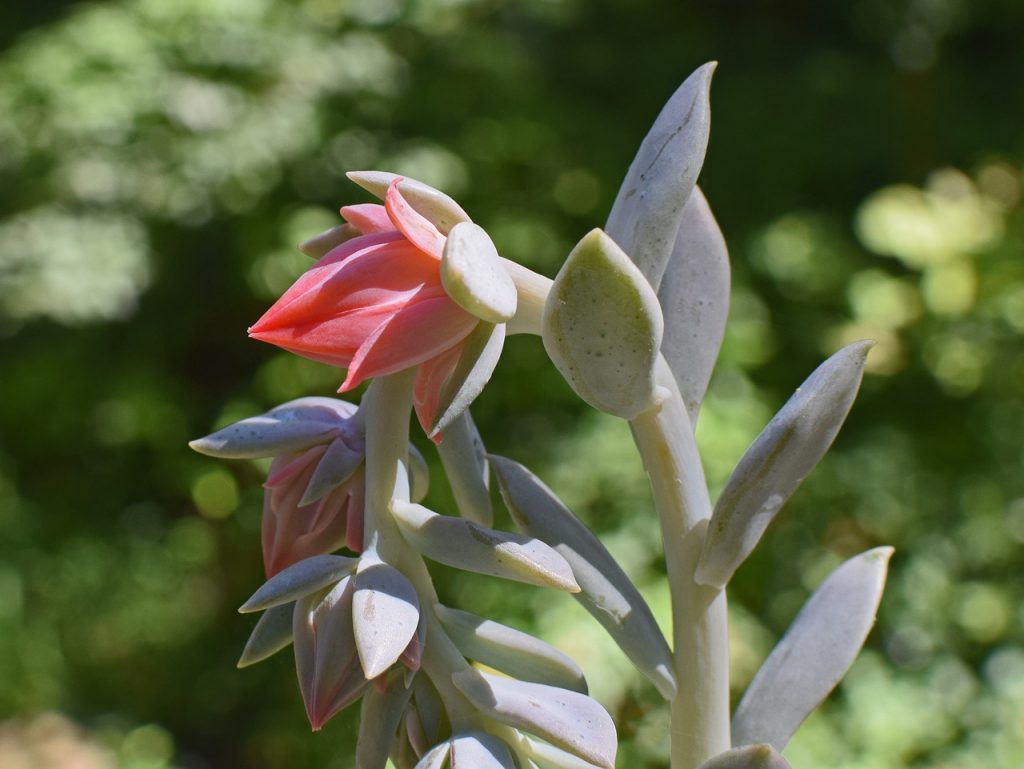All plants do flower, don’t they? Actually they don’t. We know plants that flower–which is the bigger group, and plants that do not. Fortunately, succulents do flower, though not all of them do follow a regular blooming period. It is because some of these plants are monocarpic, which means that they bloom only once and than they “die”. Seems like a sad story, but in my view, what can be better than leaving at your very peak, at the point of your highest beauty?
To the most common monocarpic succulents belong Sempervivum and aeonium. They will die after their very first and last bloom. You know, just like you have just one night with the girl–hoping it is first of many, while in fact it is the first and the last at the same time (sorry for this remark, but I am editing this post on Valentine’s day).. Good thing is though that monocarpic plants “generate” babies that continue to thrive after mother plants die.
Table of Contents
My top 3 tips when it comes to caring for flowers on your succulents
When you see the stalk of flowers on your succulents, make sure to keep aphids away from it. Aphids love succulent flowers, so it makes a lot of sense to spray 50-70% alcohol product or horticulture soap on the plants, before aphids get attracted to the blooming succulents.
Another important thing to remember: When the flowers are developing, place the plant in sunlight and be careful not to burn the leaves and pads. If it’s placed outside while flowering, make sure to give it at least an hour of sunlight every day.
For indoor succulents, you can use a heat lamp or grow light (check the one that I recommend on Amazon). This is perfect during winter or rainy days–and some succulents do flower in winter. The temperature has an impact on your succulents. If you want to get your succulents to blooming stage, you must provide enough sunlight. Succulents need warm temperatures to bloom.

When do different succulents bloom?
The blooming time of succulents depends on their seasons. For instance, Aloe Vera typically blooms in summer, but can also bloom in another season, if it finds the conditions right. Some succulents bloom in late spring to early summer. An example of this is the Echeverias. While rhipsalis, kalanchoe, hoya, and jade plant bloom in winter and autumn.
In most cases, succulents bloom first time at the age of four to six years. Some could bloom earlier, but it is more an exception than a rule. Aside from temperature or season, age, watering, sunlight, fertilizer, and amount of water, we also have to considered the photo-period of succulents— the biological clock of your plant, just as we have our own “biological clock”.
Biological clock and pollination of succulents
Scientists say that biological clock has a specific molecule (protein) interacting cells throughout the plant. For example, Schlumbergera Cultivaras also has known as Holiday Cacti needs a long-night and short days.
When succulents bloom, insects should pollinate them. Wild pollinators such as insects and butterflies help succulents and plants to pollinate, which is another way of surviving for succulent species. Some succulents cannot self-pollinate. The only way to generate more succulents is cross-pollination.
Succulents won’t bloom unless you grow them in the right soil
Different soils have different characteristics that can be good or bad to a specific plant family. The best potting soil for succulents is the one that has some drainage. It helps the water to continuously flow and absorb particles of the soil, so the plant can enjoy these nutrients through the rooting system. Making your DIY ducculent soil can save you some money. Also, the materials or ingredients are easy to find–unless you live in a big city of course, where the only thing you can find is tarmac and garbage. Basically you need three ingredient:
- potting soil,
- coarse sand (turface or poultry grit),
- pertile or pumice.
Vermiculite or any kind of moisture control plotting mix is not advisable. Your succulents soil will hold too much moisture which is bad for the plants, and they won’t flower in such a soil. Garden soil is not also advisable. Coarse sand is the second ingredient. You can use any type of sand except the really fine stuff. Perlite, on the other hand, consists of very lightweight organic soil. It looks like small pieces of styrofoam. Just combine all ingredients and mix them in your mixing container. Then stir all ingredients together. And there you are, you already have to DIY succulent soil–one in which your plants can thrive, and eventually bloom, when their time to bloom arrives.
I hope this helps, enjoy your growing, and the beautiful flowers of your succulents. If you want to learn more about successful succulent growing, such as proper watering schedule, succulent propagation, how to prune your plants etc, visit my complete guide on succulent growing. Thank you!
